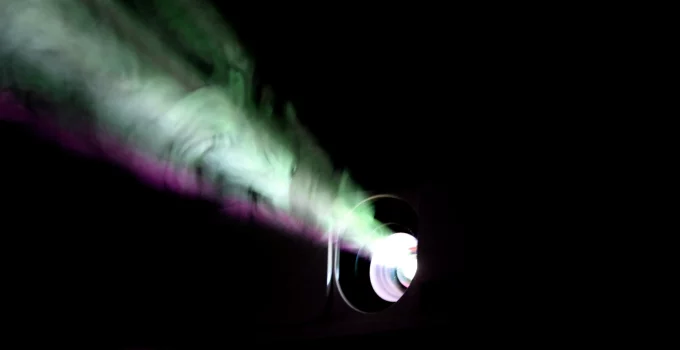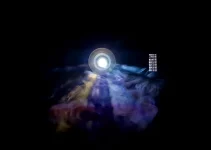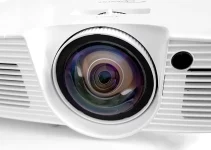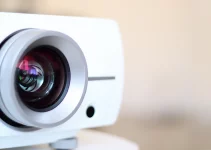Answering the question what is DLP rainbow effect is quite easy: the viewer sees a rainbow smear across the screen. You will see colors like green, red, blue, etc. across the entire screen or just focused on one part of the image, surrounding a person or an object.
The RBE (rainbow effect) is not always present across the entire screen. There are times where it’s isolated to just part of the whole picture.
It can be quite unpleasant but I should also tell you that, nowadays, DLP projectors with RBE are less prominent than in the past. Things have certainly gotten better than the older models some of us have experience with.
Nevertheless, if you’re looking at a cheap DLP projector, you should be prepared for it.
Let’s see what causes the rainbow effect, how 1-chip DLP vs 3-chip DLP really differ and other interesting things like these.
Table of Contents
What Is the DLP Rainbow Effect? What Causes It?
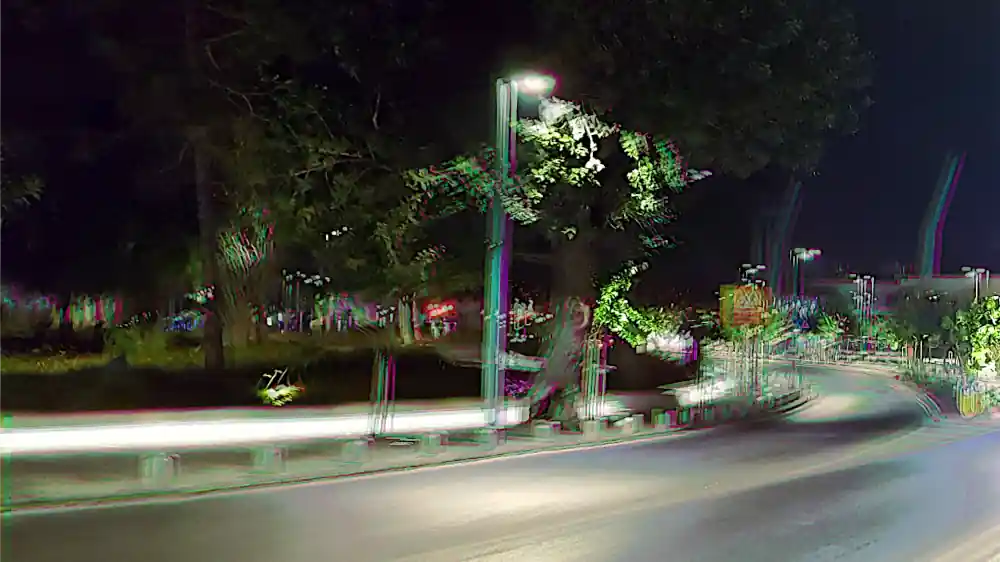
1-chip DLP projectors use a rotating color wheel to create images on a screen.
This is the only technology that uses a color wheel. That’s why they’re the projectors that can suffer from this effect.
Due to the fact that the light from the projection lamp passes through a color wheel, at any given fraction of a second, a single color is displayed on the screen.
Obviously, we are not seeing each color individually. Things move fast so our brains combine these individual colors into a full color image.
Nevertheless, some people’s brains will do another thing: make them see the rainbow effect.
I said some because not everyone will see it. Some people can use a DLP projector and never see the RBE.
Thus, if you plan on getting a 1-chip DLP projector, make sure to read multiple reviews as some might say that there’s absolutely no rainbow effect because their brains don’t register it.
Nevertheless, I once again want to highlight that this defect has mainly been mitigated as technology has evolved.
If lens of high quality are used by the manufacturer and if the devices have fast enough color wheels, even single-chip DLP projectors can be considerably saved from displaying rainbow artefacts.
When the rainbow effect appears
To complete this answer to the question what is DLP rainbow effect, I should also state when it’s more likely to appear.
This unwanted combination of mostly green, red, blue colors that appear where they shouldn’t be are more likely to be seen if your eyes move rapidly over the screen. That’s the easiest way to test it.
Another situation when these unwanted colors can appear on the screen is when bright objects on a dark background have trails of multicolored light.
There are also people who aren’t bothered by it at all so I won’t treat this con as if it’s the most awful thing that can happen. Plus, there are those lucky enough not to see it at all.
1-chip DLP vs 3-chip DLP Rainbow Effect
Can 3-chip DLP projectors suffer from RBE? No, they can’t but they’re also not cheap devices, either.
In fact, these projectors that use 3 DLP chip architecture are used for high-performance, high-brightness applications.
They can be used as data projectors (business, education), especially in large venues for presentations or in lecture halls. Another place where you might find them is in digital cinemas.
We can easily see that the 3-chip DLP is not exactly designed for the regular consumer.
3LCD projectors are mainstream and there are several models that cost under $1,000. The same thing doesn’t apply to 3-chip DLP models.
Thus, the fact that 3-chip DLP models don’t suffer from the rainbow effect is purely to satisfy our intellectual curiosity but it doesn’t actually have a bearing on our purchasing habits and decisions.
In the case of 3-chip DLP, the color passes through a prism divided into red, green, and blue. Micromirrors reflect the colored light. There’s no color wheel. That’s the concise explanation.
What about DLP laser projectors?
When I answered the question what is the DLP rainbow effect, I was strictly referring to lamp-based projectors because these are still the most affordable and more easily found around the globe.
However, nowadays, we also have DLP laser projectors. Do these models suffer from the effect, too?
DLP laser projectors can still suffer from the rainbow effect if they rely on the single chip DLP technology.
However, its occurrence can be greatly reduced due to faster flashing with laser or LED.
Even so, if you’re truly sensitive, there’s a chance you’re still going to see the RBE, whether it’s a DLP LED or laser. In that case, I can only say that LCD is the answer.
Do we get the rainbow effect with DLP LED projectors?
I want to answer this question because, in fact, DLP LED projectors are the exception to getting the RBE.
We don’t get rainbow effect with light-emitting diodes as light source because there’s no color wheel used to reproduce the image on the screen/wall. The colors are produced natively.
DLP projectors don’t get motion blur
One clear area where DLP wins over LCD is the fact that DLP projectors offer sharper and more detailed images during fast motion scenes.
On the other hand, LCD can get motion blur during fast motion scenes. Some will not notice it at all.
Epson is one of the most popular manufacturers that makes their case for why people should clearly prefer 3LCD models over DLP ones.
As a counterargument, you can read here why BenQ still prefers DLP chips over LCD for their laser models.
Now that you know exactly what is the DLP rainbow effect, are you more inclined towards buying LCD lamp-based projectors or are you willing to take a risk on the single-chip DLP technology for the right price?

